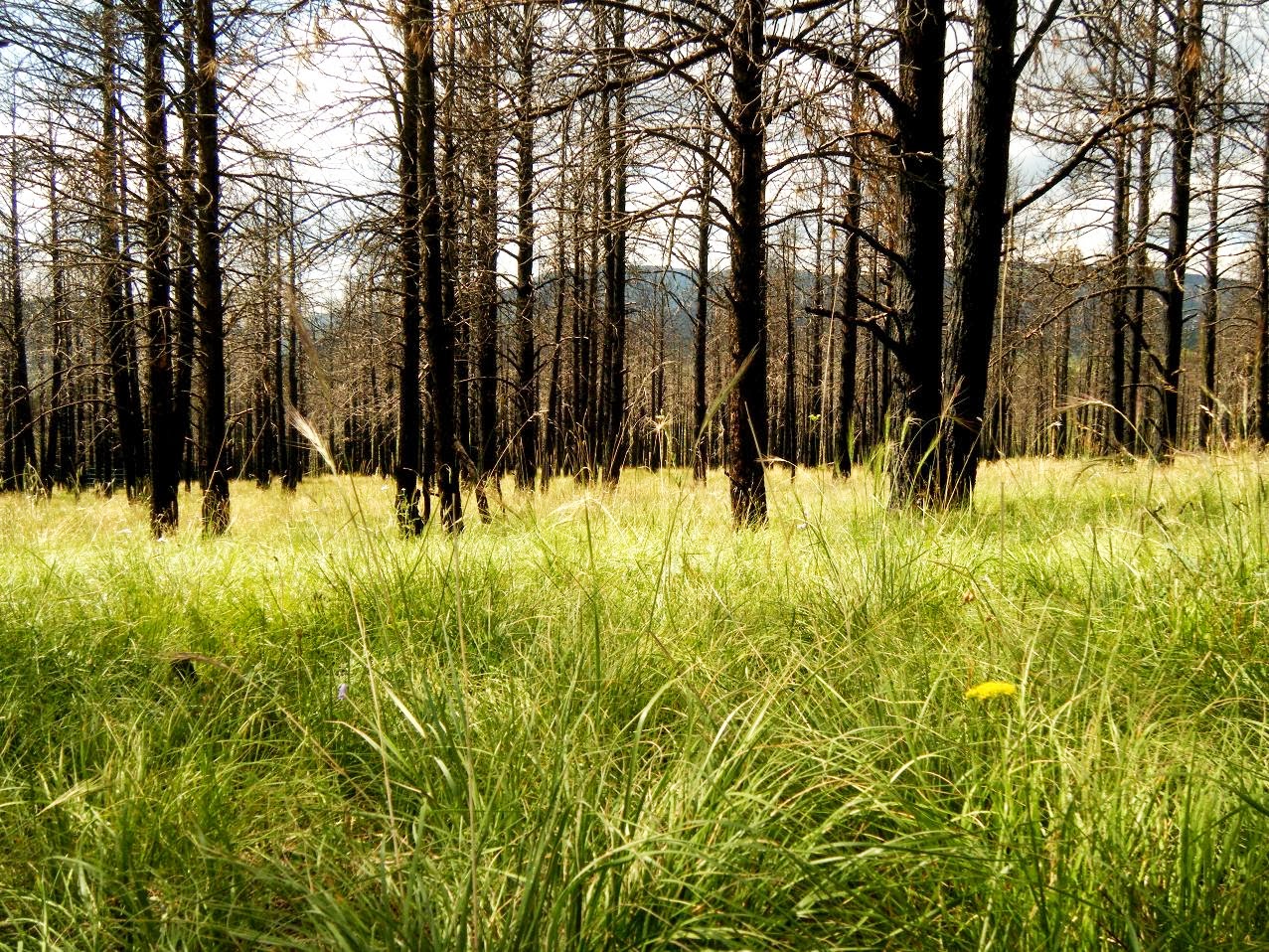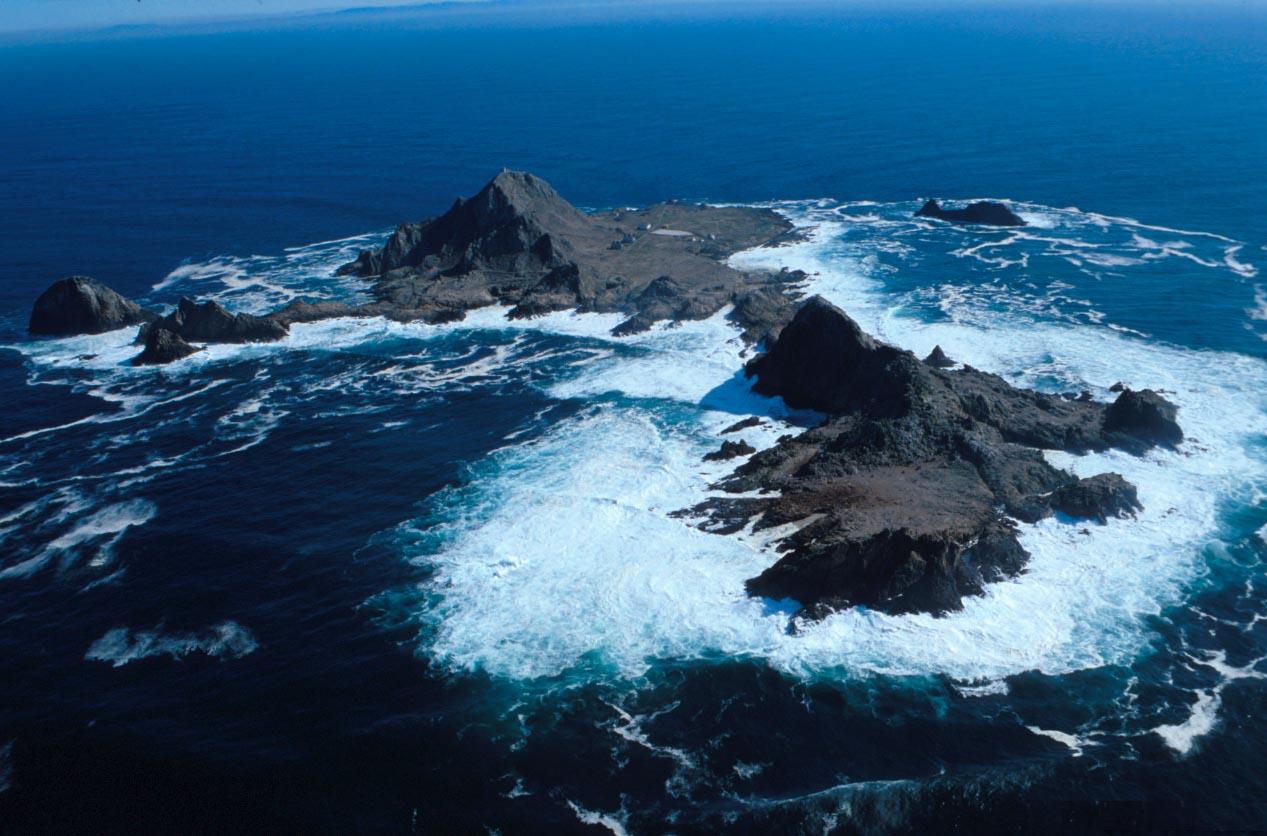I completed a literature review on the effects of salvage logging (SL). I read all of the major papers, including the two extant literature reviews, the old Forest Service-funded one by McIver and Starr, and the newer one by conservation ecologists Lindemeyer and Noss. The conclusions are consistent: in general, SL
increases fire risk,
increases erosion,
reduces wildlife habitat, and
impairs natural recovery. SL has the potential to be much more detrimental than traditional (green) logging (Lindenmeyer and Noss 2006).
 |
| This Ponderosa Pine forest burned in a the Las Conchas fire, a stand-replacing crown fire in the summer of 2011. Two years later, grasses and flowers had recolonized the area. Cover values were greater than in nearby unburned forests; forests can recover naturally from even very severe fires. |
*
Increased fire risk: salvage logging provides the kind of fuels necessary to introduce ground fires into the canopy (Donato 2005). SL increases fuel loads for 20 years compared to controls (McIver and Ottmar 2007).
 |
| These burned trees will gradually decay and fall to the forest floor. Some burned trees may take as much as 50 years to fall, providing valuable wildlife habitat all the while (Lindenmeyer 1997). If they were logged, most of the limbs and crowns would be left as "slash" that, if re-burned, would yield extremely high flame lengths and soil temperatures. |
*
Increased erosion: salvage logging has the potential to exacerbate erosional problems typically observed in burned watersheds (McIver and Starr 2000).
 |
| Natural post-fire erosion can deplete soil, further impairing vegetative recovery. Human disturbance can compact soils and channelize flow paths, thereby exacerbating natural erosion. |
*
Reduced wildlife habitat: Most wildlife species rely on dead trees in one way or another. Of the 102 terrestrial vertebrate species in Washington State, over half (56) require dead tree boles (snags) to nest or den (Hutto 2006). Across the West, 150 species of vertebrates rely on dead trees for nesting or denning (Rose et al 2001).
 |
| Less than three months post-fire, bark beetles in the Jemez Mountains, NM were so active they created large piles of sawdust. Needless to say, woodpeckers were extremely active in this area. |
*
Impaired natural vegetation recovery: SL results in increased mortality of pine seedlings (Castro et al 2011).
 |
| A pine seedling emerges from the burned forest floor one year after a fire (with a little natural fertilizer thrown in to help). This seedling would likely be crushed (and the elk dispersed) by salvage logging, necessitating an expensive tree-planting operation to compensate for destroyed natural recruitment and depleted natural fertilizers. |
Yes, forest fires are a major natural disturbance to forest ecosystems. But despite all the talk of unnatural "megafires", even the largest and hottest fires leave
some legacy of the previous forest (e.g. burned trees). Logging is also a major disturbance to natural forest ecosystems, a disturbance that burned forests are less resilient to. Multiple disturbances have cumulative effects on ecosystems, so compounding the damage to a burned forest by removing the remaining trees is much more damaging than logging without fire.
Going forward, there needs to be broader recognition of the ability of ecosystems to recover from natural disturbances and the essential role of biological legacies (in this case, dead burned trees) in the maintenance of biodiversity and ecosystem processes (Lindenmeyer, Burton, and Franklin, 2008). Those burned trees are hard at work shepherding the forest back to life, not wasted timber that must be "salvaged".










